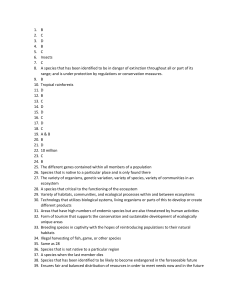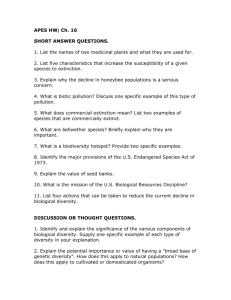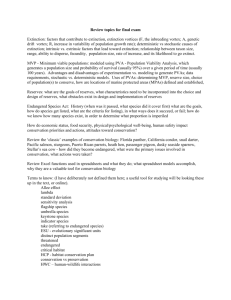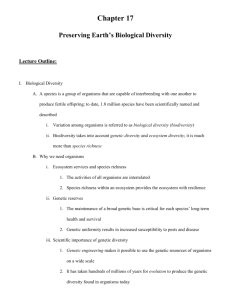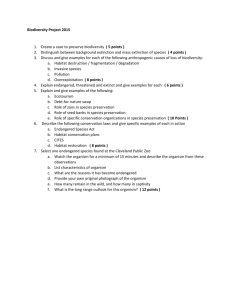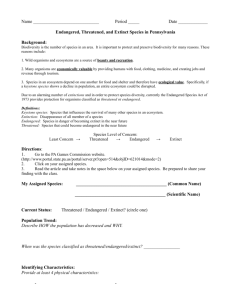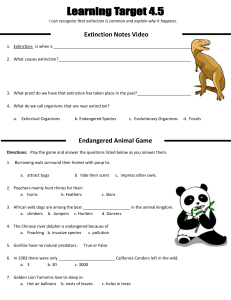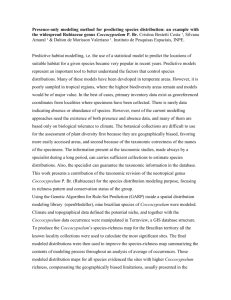Chapter 15 notes
advertisement
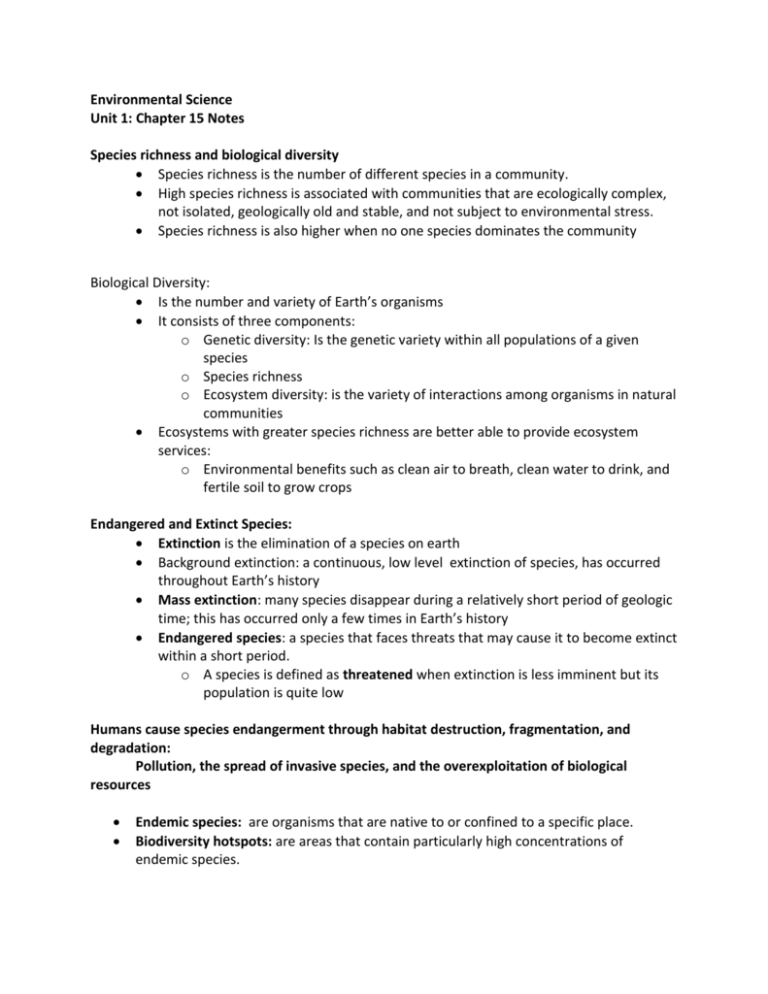
Environmental Science Unit 1: Chapter 15 Notes Species richness and biological diversity Species richness is the number of different species in a community. High species richness is associated with communities that are ecologically complex, not isolated, geologically old and stable, and not subject to environmental stress. Species richness is also higher when no one species dominates the community Biological Diversity: Is the number and variety of Earth’s organisms It consists of three components: o Genetic diversity: Is the genetic variety within all populations of a given species o Species richness o Ecosystem diversity: is the variety of interactions among organisms in natural communities Ecosystems with greater species richness are better able to provide ecosystem services: o Environmental benefits such as clean air to breath, clean water to drink, and fertile soil to grow crops Endangered and Extinct Species: Extinction is the elimination of a species on earth Background extinction: a continuous, low level extinction of species, has occurred throughout Earth’s history Mass extinction: many species disappear during a relatively short period of geologic time; this has occurred only a few times in Earth’s history Endangered species: a species that faces threats that may cause it to become extinct within a short period. o A species is defined as threatened when extinction is less imminent but its population is quite low Humans cause species endangerment through habitat destruction, fragmentation, and degradation: Pollution, the spread of invasive species, and the overexploitation of biological resources Endemic species: are organisms that are native to or confined to a specific place. Biodiversity hotspots: are areas that contain particularly high concentrations of endemic species. Invasive species: are foreign species, usually introduced by humans, that spread rapidly in a new area where they are free of predators, parasites, or resource limitations that may have controlled their population in their native habitat. Conservation Biology: Conservation Biology: is the scientific study of how humans affect organisms and of the development of ways to protect biological diversity o In situ conservation: includes the establishment of parks and reserves to preserve biological diversity in nature. o Ex situ conservation: involves conservation of biological diversity in human – controlled settings such as zoos and seed banks Restoration Ecology: o is the study of the historical condition of human-damaged ecosystem, with the goal of returning it as closely as possible to its former state. Conservation Policies and Laws The Endangered Species Act (ESA) o Authorizes the US Fish and Wildlife Service to protect endangered and threatened species in the United States and abroad. o Requires the FWS to select critical habitats and design a detailed recovery plan for each species listed. o Species are designated as endangered or threatened entirely on biological grounds, not economic factors. o The act does not compensate private property owners who suffer financial losses related to its enforcement World Conservation Strategy o Formulated by the International Union for the Conservation of Nature, The World Wildlife Fund and the UN Environmental Program Seeks to conserve biological diversity worldwide To preserve vital ecosystem services To develop sustainable uses of organisms and their ecosystems
